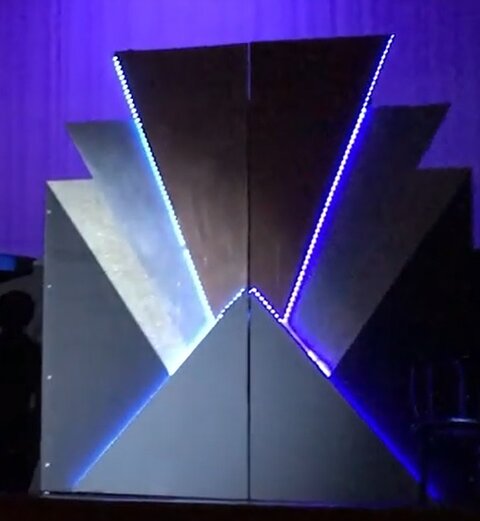Hi Harrison,
My hat is off to you for being well-versed in the intricasies of
LED dimming. I thought I knew a little
bit about it (
PWM vs analog,
etc.) but some quick reading suggests I'm a babe in the woods.
I think I can
address your questions with this blanket statement: Rather than dreaming of everything I'd like our
LED "rainbow" to do and then seeking the technology to make it happen, I am plenty fine with flipping the tables: let's consider a basic/simple setup and we'll figure out how best to use the capabilities available. Our audiences (mostly kids and family members) are not particularly discerning, and won't be disturbed by semi-abrupt dimming curves or minor differences in
color temperature across our rainbow. I also don't have the bandwidth to pursue a ton of research and self-education for this project -- I need it as close to
Plug and
Play as we can reasonably achieve for a few hundred bucks.
The arc of our rainbow as envisioned is 16" wide and 4" thick and spans about 30', with the top of the arch hitting ca. 16'. It will be divided into 5 or possibly seven segments, each covered with a piece of Tyvek as a diffusing medium (as in the photo I posted). Here is what we need (vs would like) it to be able to do:
At a minimum: Light each segment in any
RGB hue we choose, where the color is solid/even throughout the segment, and turns on and off via some kind of basic dimming curve rather than 0%/100%.
Ideal: Be able to adjust the brightness radially, so that
intensity increases or decreases along a gradient from one
edge to the other.
At a minimum: Create a classic rainbow
effect with parallel stripes of different colors stretching over the whole length, using a basic dimming curve.
Ideal: Have the rainbow illuminate from one end to the other sequentially, as though it is leaping up and across the
proscenium. Alternate - start with the stripe/color closest to the inside
edge of the arch and add additional colors one at a time outward.
Stuff it would be awesome to be able to do but that is UNNECESSARY if it's at all difficult or super expensive: dancing effects for musical numbers, animation
effect for witch casting a spell, "snowflakes falling," twinkling stars, custom patterns (tree limbs, clouds, architectural features), or letters ("SURRENDER DOROTHY" or "THE END")
With these additional details, focusing on the "minimum" requirements, what can you suggest?
With thanks -
Stuart R



